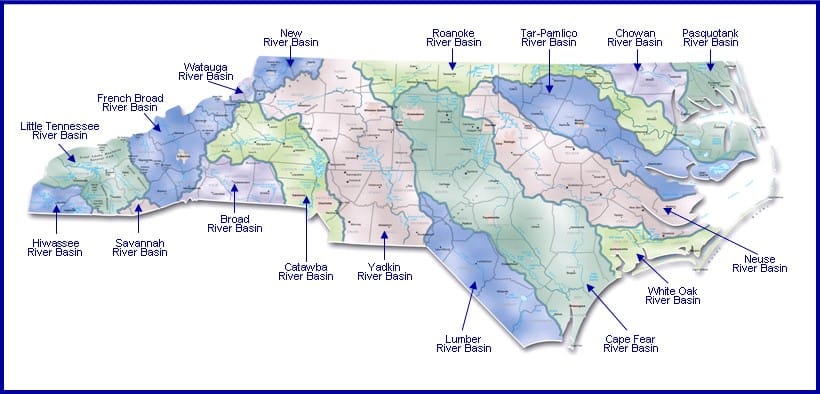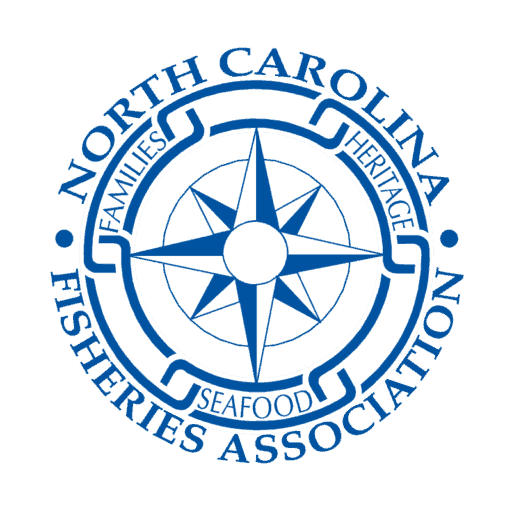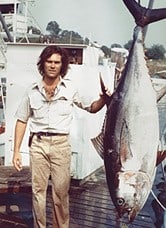Jess Hawkins has a Masters of Science in Biology. He was the former Chief of Fisheries Management with the North Carolina Division of Marine Fisheries. He is currently an instructor with the Duke University Marine Laboratory and North Carolina State University CMAST Laboratory teaching Marine Fisheries Ecology.
During the last 10 years the public debate about the status of fisheries resources in North Carolina has been intense and controversial. Some fisheries and natural resource nonprofit groups have argued that our resources are not being managed sustainably and that those resources are at such low levels significant action is needed now to revamp North Carolina’s fisheries management system. In recent years, our legislative and executive leaders have discussed whether such substantial actions as gamefish designation, redefining commercial fishermen, closing North Carolina’s inside waters to shrimp trawling are needed. Often lost in such discussions is what effects water quality and habitat are having on our fisheries resources.
 First, some facts that might help the reader realize the importance of water quality and habitat on fisheries resources in North Carolina. Our state has more estuarine habitat, 2.3 million acres, than any state in the USA. We have the largest estuary (brackish water), Pamlico-Albemarle Sound, of any one state. Pamlico-Albemarle Sound is second in size only to Chesapeake Bay, but the Bay is a part of at least five states or government jurisdictions. Our estuarine waters are bordered by hundreds of thousands of acres of critically important salt marsh which produce more food energy per acre than any known type of habitat.
First, some facts that might help the reader realize the importance of water quality and habitat on fisheries resources in North Carolina. Our state has more estuarine habitat, 2.3 million acres, than any state in the USA. We have the largest estuary (brackish water), Pamlico-Albemarle Sound, of any one state. Pamlico-Albemarle Sound is second in size only to Chesapeake Bay, but the Bay is a part of at least five states or government jurisdictions. Our estuarine waters are bordered by hundreds of thousands of acres of critically important salt marsh which produce more food energy per acre than any known type of habitat.
Much of North Carolina’s estuarine waters are separated from the Atlantic ocean by barrier islands (over 300 miles), which restrict the flow of water in/out of our estuaries, punctuated only by a few openings called inlets. Pamlico-Albemarle Sound is essentially a large lagoon with a handful of flushing points. Many of our fish and shellfish species depend on the estuaries to complete their life-cycle. As much as 90% of North Carolina’s commercial seafood landings depend on species that are estuarine dependent, with 60% of the recreational landings dependent on estuaries. Some of our coastal waters serve as spawning areas for such species as red drum and speckled trout. The state’s waters also serve as important nurseries for such species as brown shrimp and blue crabs. North Carolina is second only to Florida regarding the amount of coastal sea grasses, a very important fish habitat. Our state has several large rivers that function as spawning areas for species such as striped bass that migrate from the ocean into freshwater to spawn (anadromous).
North Carolina is located in a key geographic location, where the cold Labrador Current meets the warm Gulf Stream. This strategic positioning allows North Carolina to serve as habitat for many semi-tropical species such as grouper and snapper and cooler water species such as tautog.
The North Carolina Coastal Habitat Protection Plan (CHPP-2016) stated that the combination of fish species richness, the extensive estuarine and marine waters, and the diversity of fish habitats makes North Carolina coastal fisheries among the most productive in the USA.
Bad water quality and detrimental impacts to fish habitats can affect fish productivity in many ways. Scientists use fish as indicators of poor water quality, much like the “canary in the coal mine” concept we older folks were told about as youth. Poor water quality and loss of habitat can impede fish spawning success, depress the number of small fish/shellfish surviving (recruitment), and prevent proper growth. These factors can also cause fish to migrate from important habitat areas, making them more susceptible to predation. Sometimes if the changes in water quality occur quickly/ intensely or the fish cannot move, the resources die.
Water quality and habitat are not only critical for our billion dollars per year commercial and recreational fisheries, but also for tourism, the main economic driver for coastal communities. A recent prominent example can be seen along the Gulf Coast of Florida, where fisheries and tourism have been substantially impacted by an ongoing red tide algal bloom. We have seen similar events in North Carolina in the recent past. North Carolina’s rivers would turn green in the 1970’s and 1980’s due to algal blooms caused by high nutrient levels (eutrophication) in the waters. Fish kills were substantial in our rivers. As much as 70% of the young fish in the Pamlico River had diseases and sores that were suspected to be caused by eutrophication. The situation was so substantial that the Governor created special teams to respond to the fish kills and algal blooms. The water became so degraded that the Director of the Division of Marine Fisheries declared the Pamlico River as “commercially dead” in 1989.
Measures such as nutrient sensitive waters and runoff buffers were implemented in the late 1980’s and 1990’s which helped decrease the frequency of algal blooms. However, in spite of these measures nutrient levels in rivers such as the Neuse River are increasing, mainly due to non-point runoff and have been increasing for 20 years (Sea Grant 2017). Fish kills still frequently occur and are a major problem for those estuaries. Sores in some species of fish, such as menhaden which is an important forage fish, commonly occur. Low oxygen events (hypoxia) still are frequent and extensive in our major rivers, sometimes killing fish or making them migrate.
We have over 400,000 acres of shellfish waters closed to harvest due to water quality impacts (CHPP 2016). In March 2017 an additional 2,000 acres were closed due to impaired waters. Prime historically producing shellfish areas, such as Newport River (known for its Mill Creek oysters), are being lost to shellfishing due to bad water quality. Even areas such as the Outstanding Resource Waters in Bogue Sound are experiencing more frequent closures due to pollution. Our closed shellfishing waters and the temporary closures will be a major issue with regards to North Carolina’s 20 year effort in restoring our oyster resources, its fisheries and oyster mariculture businesses. Researchers have estimated that over the last 30 years the value of the clam/oyster fisheries has dropped $10,000,000 annually due to the increased shellfish closures (Malin 2009). Congress passed the Clean Water Act in 1972 and 1977 to help prevent losses of such uses as shellfishing in our public trust waters.
Striped bass is a recreationally and commercially important species; North Carolina’s largest population uses the Roanoke River to spawn. Fisheries conservation for the Albemarle/Roanoke River striped bass stock did not make measurable progress until desirable water flow rates from Kerr Reservoir (has several dams) were negotiated by the state with the federal government to help striped bass spawning. That population was declared restored in 1997 and currently is not overfished and overfishing is not occurring. An opposite picture evolves in the Cape Fear River, where a total harvest moratorium was put in place over 10 years ago, but the population is still depressed. The Cape Fear River has many dams in the lower reaches which impede migration to historical spawning grounds. The Cape Fear River has an estimated 191 dams/impoundments in its basin (CHPP 2016).
River herring, another anadromous fish, used to support one of North Carolina’s largest fisheries and one on the largest in the USA. Due to habitat loss, water quality degradation and high fishing pressure, river herring landings began to decline in the late 1980’s (NCDMF 2018). Fisheries restrictions imposed in the 1990’s and the 2000’s in the major harvest area of Albemarle Sound/Chowan River were not effective in stopping the population decline and statewide harvest was stopped in 2007. The population still has not recovered over 10 years later. Populations in our other major rivers remain low, even though harvest was minimal to nonexistent from 1978 to 2007. River herring populations are depressed coastwide in the USA and harvest moratoria have been enacted in many states. However, some states are seeing some of their populations restored, citing their efforts in removing spawning migration obstructions (dams/culverts), coupled with fishery restrictions. The Chowan River, the most important river herring spawning area has nearly 38% of its tributaries obstructed by dams/culverts (CHPP 2016).
One last example of water quality/habitat impacts involves our sea grass beds. Sea grasses serve as critical nurseries for many young fish/shellfish and are important feeding habitat for numerous species. Their importance led our state to restrict habitat altering activities such as channel dredging and bottom disturbing fishing gears around identified grass beds. Vast areas along the Outer Banks are closed to oyster dredges and trawls due to the presence of high salinity grass beds. Additionally, submerged vegetation is vulnerable to water quality effects, particularly high nutrient runoff and suspended sediments. North Carolina also has brackish water grasses that are primarily found in the bays and rivers bordering western Pamlico/Albemarle Sound. Vegetation beds that used to line the banks of the Neuse and Pamlico Rivers during the 1960’s and 1970’s have essentially disappeared. Total submerged vegetation has decreased by as much as 50%, primarily due to the losses of brackish water grasses (CHPP 2016).

Patchy seagrass beds in Back Sound, near Beaufort NC. Image credit: NOAA.
One species almost completely dependent on submerged grasses is bay scallops. These shellfish primarily occur in high salinity grasses, using the beds for protection from predators and their larvae for attaching to grass blades right after spawning. North Carolina was a leading location for bay scallop harvest as recently as the late 1980’s; with numerous processing houses located near the state’s most productive beds (Carteret County). A red tide bloom decimated the scallop resource in 1987 and it has never recovered. Scientists think that excess predation by rays contribute to the depressed population levels, but whether this is the primary factor affecting the lack of scallop recruitment or other factors such as suitable/adequate habitat are influencing the population is still unknown. What is clear is that North Carolina no longer has a healthy resource that used to support coastal communities, provide a wonderful seafood item to consumers and historically were an important component of North Carolina’s coastal ecology.
These are just a few examples of the importance of habitat and water quality to our fishery resources. When citizens hear narratives about the imperiled seafood stocks in North Carolina or when they enjoy our wonderful seafood at a restaurant or at home, I hope they realize what an important role water quality and habitat play in the health of North Carolina’s fishery resources.


Related Articles
The Saga of Southern Flounder
Related Articles Stay Up to Date With The Latest News & Updates Join Our Newsletter
The Saga of Southern Flounder; The Rest of the Story…
Related Articles Stay Up to Date With The Latest News & Updates Join Our Newsletter
Southern Flounder, by the Numbers
Related Articles Stay Up to Date With The Latest News & Updates Join Our Newsletter

